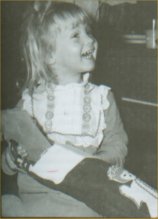"The True Face of Earth:"
"The brave writers whose work is represented in this volume have acted in good faith, faced their demons, stayed the course, and revised relentlessly. And in taking on the subject of themselves—making themselves vulnerable to the unseen reader—they have exchanged powerlessness for the power that comes with self-awareness."--Wally Lamb
These powerful stories, testaments, hit us on all levels: we can't escape the power of their story, Let's reflect on anything and everything that comes to us as a result of reading them, INCLUDING the art of writing them.
1. Wally Lamb begins his introduction explaining what goes on in editing, quoting different authors on the art of writing, and lists several techniques the authors in this book may have used. Are you familiar with any of these Writing Techniques? Let's keep an eye out for particularly good examples of the writer's craft. How does the beginning of each of first three stories engage the reader immediately?
Whose point of view is the story "The True Face of Earth" told from? What effect does this have on the reader? How does this viewpoint increase the poignancy of the story? "Couldn't Keep it to Ourselves:" (page 3) But authors on tour are quieter, more solitary souls. Between appointments, we sit by ourselves in our rooms, nibbling like prairie dogs on room service sandwiches, or ironing our clothes for the next reading, or watching Judge Judy,….And sitting on the edge of the bed in room 417 of the Westin Hotel, I uttered in a sheepish voice [while watching Jeopardy!] "Who is Wally Lamb?"2. What a dear man. Does this revelation of what it's really like to be a famous sought after author on tour surprise you? What was your own conception of what being a celebrated author must be like?
In "The True Face of Earth" the author has very cleverly continued the themes of looking people in the eye throughout the story.How many instances can you find where people did or did not look each other in the eye and what did each reveal about the situation?
loneliness (Denjer) emptiness betrayal disillusionment eye contact trust (Zinnia) Recurring Images/References The egg The airplane/ airport The Little Prince
Have you noticed that "The True Face of Earth" begins and ends with references to Saint-Exupery? In how many ways do the references reflect the narrator and theme of the story?
Have you ever taken a writing class? What did you write, fiction, non fiction, humor, memoir? If we had, as an exercise at the end of this reading, a short writing effort from everybody on their own lives, could you do it? What must it have taken to rewrite and revisit these events of the past? What would you think would be the effect on the author?
Memoir is the hottest new genre in literature but what precisely IS a memoir? How does it differ from autobiography, if it does? Wally Lamb mentions the technique of "how to recast memories as dramatic scenes with the help of fictional techniques." Are there any examples of what might be considered "fictional techniques" in this story?
© SeniorLearn. All rights reserved.
Contact: webmaster@seniorlearn.org